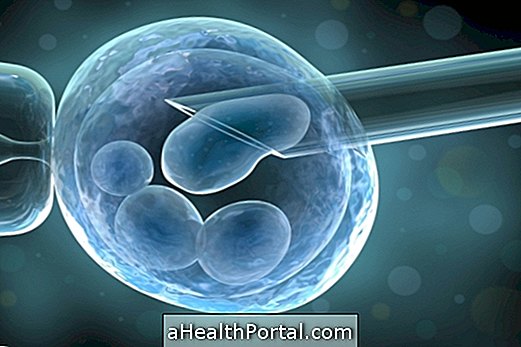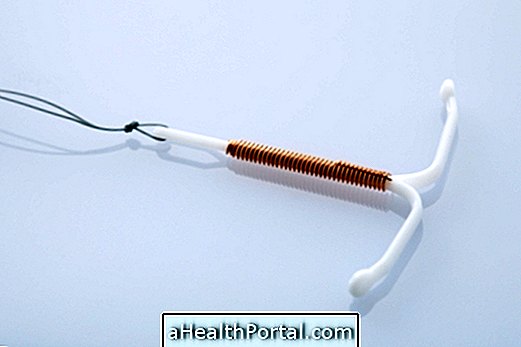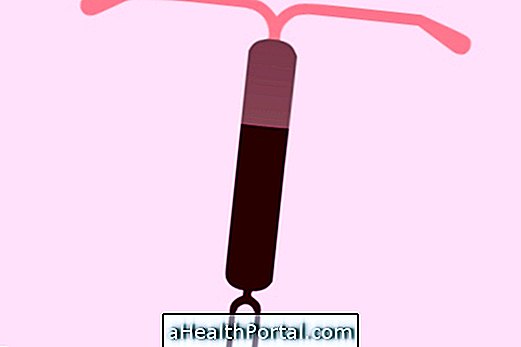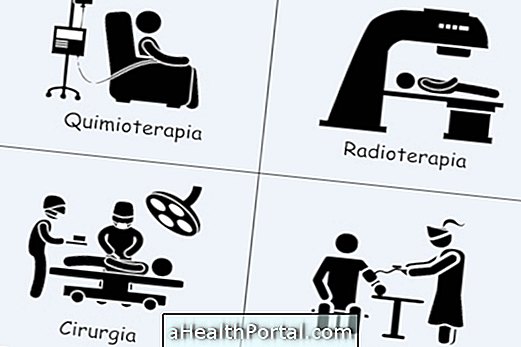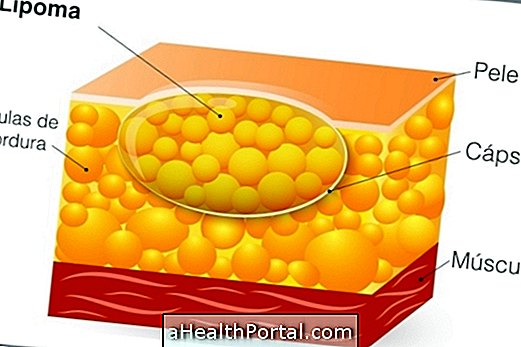The contraceptive pill is the method most used by women to prevent the onset of pregnancy because it is easy to use and has high efficacy against unwanted pregnancies.
However, the contraceptive pill, due to the hormonal changes it causes in the woman's body, can trigger the onset of some side effects which include:
1. Headache and nausea
![]()
Some premenstrual symptoms, such as headaches, abdominal pain and nausea, are common in the first few weeks of the use of the contraceptive pill due to major hormonal changes.
What to do: It is recommended to consult your gynecologist when these symptoms prevent daily activities or take more than 3 months to disappear, as it may be necessary to change the type of pill. See other ways to combat these types of symptoms.
2. Altering menstrual flow
There is often a decrease in the amount and duration of bleeding during menstruation, as well as escape bleeds between each menstrual cycle, especially in the use of low dose pills that make the lining of the uterus thinner and fragile.
What to do: You may need to take a higher dosage pill whenever bleeding, or spotting, occurs in more than 3 menstrual cycles in a row. Learn more about this type of bleeding in: What can be bleeding out of the menstrual period.
3. Weight gain
![]()
Weight gain may arise when the hormonal changes brought about by the pill lead to increased will to eat. In addition, some birth control pills can also cause fluid retention due to accumulation of sodium and potassium in the body tissues, causing an increase in body weight.
What to do: You should maintain a healthy and balanced diet, as well as exercise regularly. However, when a woman suspects fluid retention due to swelling of the legs, for example, she should consult her gynecologist to change the contraceptive pill or take a diuretic medicine. Check out 7 teas you can use against fluid retention.
4. Emergence of pimples
![]()
Although the birth control pill is often used as a treatment to prevent the onset of teenage acne, some women using a mini-pill may have increased pimples in the first few months of use.
What to do: When acne appears or worsens after the birth control pill is started, it is advised to inform the gynecologist and consult a dermatologist to adjust the treatment or start using anti-spine creams.
5. Mood changes
![]()
Mood swings are mainly due to prolonged use of the contraceptive pill with a high hormonal dose, since high levels of estrogen and progestin may decrease the production of serotonin, a hormone that improves mood and may increase the risk of depression.
What to do: It is recommended to consult your gynecologist to change the type of pill or start a different method of contraception, such as IUD or Diaphragm, for example.
6. Decreased libido
The contraceptive pill may cause a decrease in libido due to reduced production of testosterone in the body, however, this effect is more frequent in women with high levels of anxiety.
What to do: You should consult your gynecologist to adjust the hormone levels of the contraceptive pill or start hormone replacement to avoid the decrease of the libido. Here are some natural ways to increase libido and avoid this effect.
7. Increased risk of thrombosis
The contraceptive pill may increase the risk of deep vein thrombosis when the woman has other cardiovascular risk factors like high blood pressure, diabetes or high cholesterol, for example.
What to do: You should maintain a healthy diet and exercise regularly, as well as make regular consultations with the general practitioner to assess blood pressure, blood sugar, and cholesterol to prevent blood clots from forming that can cause thrombosis deep vein.
When to change the contraceptive method
It is recommended to consult the gynecologist and evaluate the possibility of using another method to avoid unwanted pregnancies whenever there are side effects that prevent daily activities or when symptoms take more than 3 months to disappear.
Learn other ways to avoid pregnancy in:
- Advantages and disadvantages of the IUD
- Understand How the Billings Ovulation Method Works
